As I write this, the waxing moon is in its gibbous phase—heading toward a full moon in less than a week.
For the vast majority of my life, I had no idea what phase the moon was in (and I still need help of a calendar). I didn’t know what the terms meant, I didn’t even know where (or when) to look in the sky to find it (still learning this actually). I don’t think I’m the only one, either. Between spending most of our time indoors, light pollution, entertainment on demand, and our phones, few of us bother to look into the sky today—day or night. And yet, it was the nighttime sky that helped our ancestors to first understand the world, seasons, tides, navigation, and how we connect to all this.*
But about six months ago, I decided to start fasting on the day of the full moon.
I felt I wanted to fast more, for several reasons: because the science is now quite robust on the health benefits of fasting; because of the spiritual benefits (to practice going without, to know that I can, and to use fewer resources); and yes, perhaps because I, like many others, have gained a few pounds during quarantine!
But it’s hard to fast—and to find the right frequency so that it remains joyful. Just a few days in the spring and one on Earth Overshoot Day aren’t enough. Nor is it easy to just say I’m gonna fast today—without some ritualistic anchor, especially when living in a household where others eat and expect you to eat. On the other hand, forty days (Lent) or even thirty days (Ramadan) in a row seem excessive (and either typically leads it to being limited to one vice food or maybe offset with early morning and nighttime meals that can undermine the fast). Even a weekly fast felt too frequent. So it dawned on me, what about a monthly fast?
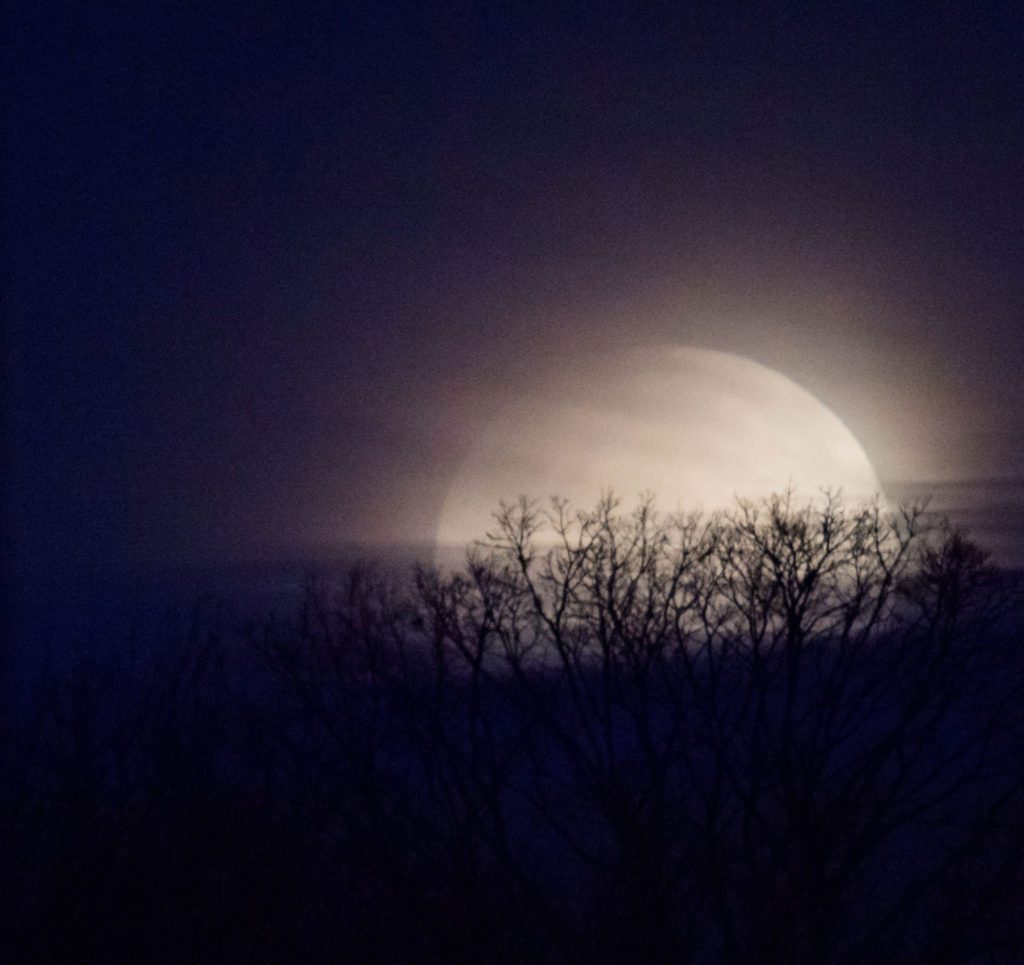
And what happens monthly? What cycle have modern humans nearly completely disconnected themselves from and could help us reconnect to the Earth? The moon phases, of course. Why not reclaim our connection to this essential monthly cycle—one that is (as hard as this is to believe) the same all over the world?
Unlike seasons, no matter where you are in the world, the moon phase is identical. If it’s full in New York, it’s full in Sydney and Tokyo too.** So if you look up and bask in the light of the full moon, know that so too will someone on the other side of the planet.
Not surpisingly, it turns out that full moon fasting isn’t a new idea. A friend shared with me that Buddhists hold moon days sacred (some just the full moon, others the new and full moon, others all four phases). After six months, I can now say, my full moon fast hasn’t been difficult (nor has my new moon fast, which I integrated a few months back), which demonstrated to me very clearly why I need to fast.
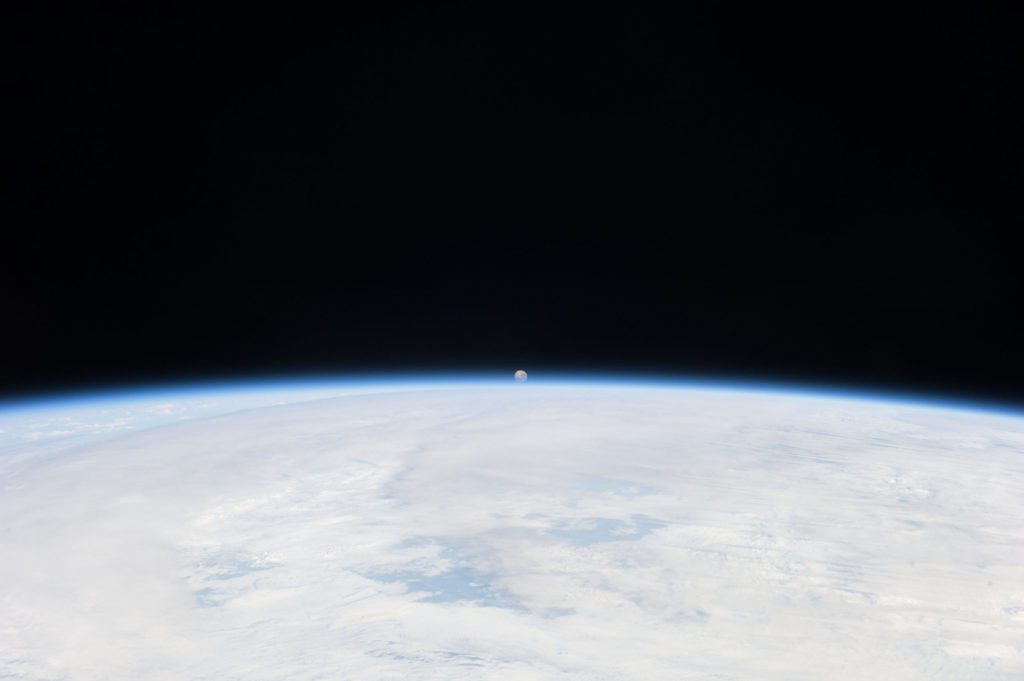
The Benefits of Fasting
With so much food available to consumers, it is difficult to eat the right amount of calories. It’s difficult to avoid temptation of ultraprocessed, highly engineered foods that spark addictive drives, triggered by salt, fat, sugar, and mouthfeel. It’s frankly difficult to even sense our natural bodily signals. How often do you eat because you are truly hungry rather than because it’s breakfast, lunch, or dinnertime?
Fasting has many benefits. Fasting reduces your overall calories and impact on the planet; it creates physiological space to shift bodily processes from digestion to cellular clean-up. It reconnects you to your hunger cycle; from breaking you out of mindless food habits (like reaching for a cookie after lunch, or eating a quarter of your meal while preparing it); to even showing you that you can go longer than you think without eating and be all right. It also seems to help reset palates and temper addictions to vices like sugar—I’ve found that over these past six months, my sugar cravings have lessened, at least in the days immediately following the fast. And of course, there are spiritual benefits. Fasting reminds you of your connection to and complete dependency on the living Earth. It shows that you can make small sacrifices to help heal and care for Gaia—and even benefit from this. And finally it confirms that you are strong enough to deal with disruptions that will come in the challenging future ahead.

I’ve certainly felt the benefits already. One small example: since I started fasting, coffee with milk and sugar started to taste too sweet and now I just drink it with milk (without it feeling like a sacrifice). A minor thing, but at two cups a day, that’s 11,680 calories a year avoided, and three kilograms of sugar each year that will no longer be grown from 15 kilos of sugarcane, processed, or shipped to Connecticut (who knew!?).
Essentially, fasting is a valuable spiritual practice that helps shake us from our daily routines, while improving our physical health and lowering our ecological impact. Add to that the opportunity to reconnect with the deeply neglected moon cycle and I’d argue you have the makings of a good new monthly habit.
Reconnecting with Luna
So few of us know much about the mysterious orb circling the Earth—the one both month and Monday are named after. But here’s a quick introduction. First, while scientists aren’t sure, they think the moon derives from an impact between a protoplanet “Theia” and Gaia 4.5 billion years ago. A ring of planetary dust then congealed over time into this natural satellite (or perhaps two moons which then merged in another smaller collision).
Our modern moon takes 27.3 days to orbit the Earth. However, the Earth is orbiting the sun so it takes the moon another 2.2 days to catch up with the Earth’s new position, thus creating a 29.5 day moon cycle. Dividing 29.5 into 365.25 we get 12.38 moon cycles a year. When there is a 13th moon in the year, that’s called a “Blue Moon.”
What explains the moon’s phases? The moon, of course, doesn’t release light; it reflects the light of the sun. So when it’s on the near side of the sun, the side of the moon away from us is illuminated, and thus we have the dark “new moon.” When the Earth is in between the sun and the moon, we get the full moon, and as it travels between these two extremes we get the other phases—crescent, quarter (which looks like a half moon), and gibbous. As it goes from full to new that’s called a waning moon. As it goes from new to full, that’s called a waxing moon.***
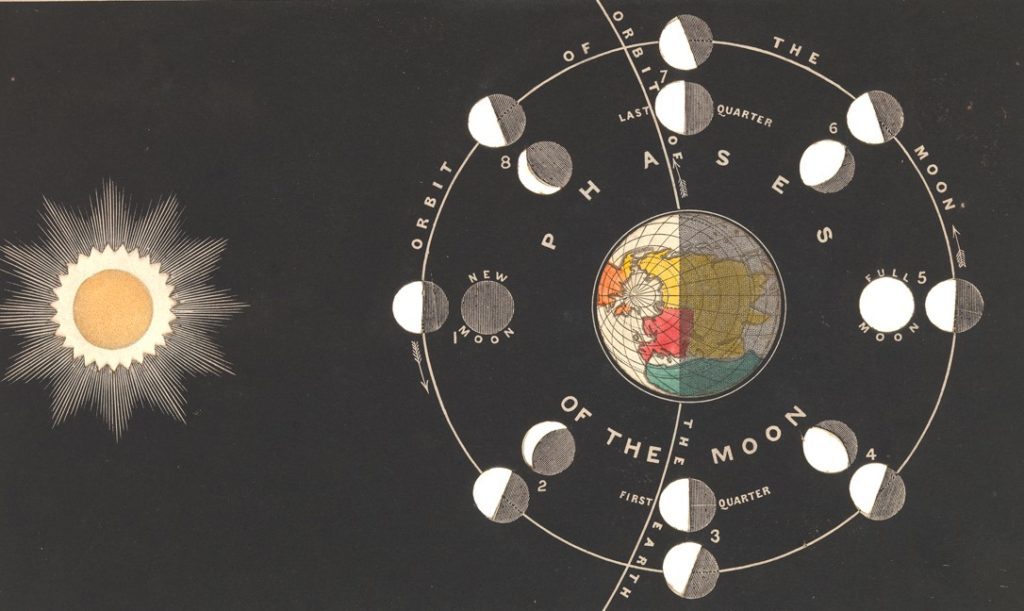
Putting It Together
So far, I’ve treated this as a simple intermittent fast. After dinner the night before the full moon I brush my teeth and go outside for a brief moon meditation. I then continue to fast until dinner, about 23 hours from then. But before dinner I meditate again to end the fast. It gives a nice opening and closing symbolism to the fast. At dinner I skip dessert to let my body readjust, and frankly because that’s my vice and keeping away from sugar another day is a plus. You could do the same with alcohol or whatever food/drink you struggle with.
I thought about making the fast a full 24 hours (i.e. skipping dinner as well on the full moon), or phasing in elements like no sweets for several days, but those felt like a higher bar. (And as this great article discusses, it’s better to start with an easier achievable habit that you can stick with rather than overreaching and giving up.) After four months, I also added in fasting on new moon days as well, which (once I got used to the feeling of fasting and following the moon cycle) feels like a natural extension. So now, with these 24 full and new moon fast days, that brings me up to about 24-28 fasting days per year (depending on whether they overlap with the spring germination fast and Earth Overshoot Day). That’s about 7 percent of the year, and nearly as long as other religious fasts, both of which suggest this is pretty reasonable.****
A final note: as I read about spiritual fasting, I discovered that Muhammad specifically allowed Muslims to fast at a different time if they were sick or on a journey. What a practical bit of guidance! The first full moon fast I did happened to be on Halloween—which made it difficult (as I went trick or treating with my son and then stopped by our neighbor’s Halloween party). But I decided that a Halloween party (especially after so many months of social isolation) took precedence over fasting (especially as it was technically after the fast ended—other than the sweets restriction). Muhammad might have said to skip sweets another day. Sound advice!
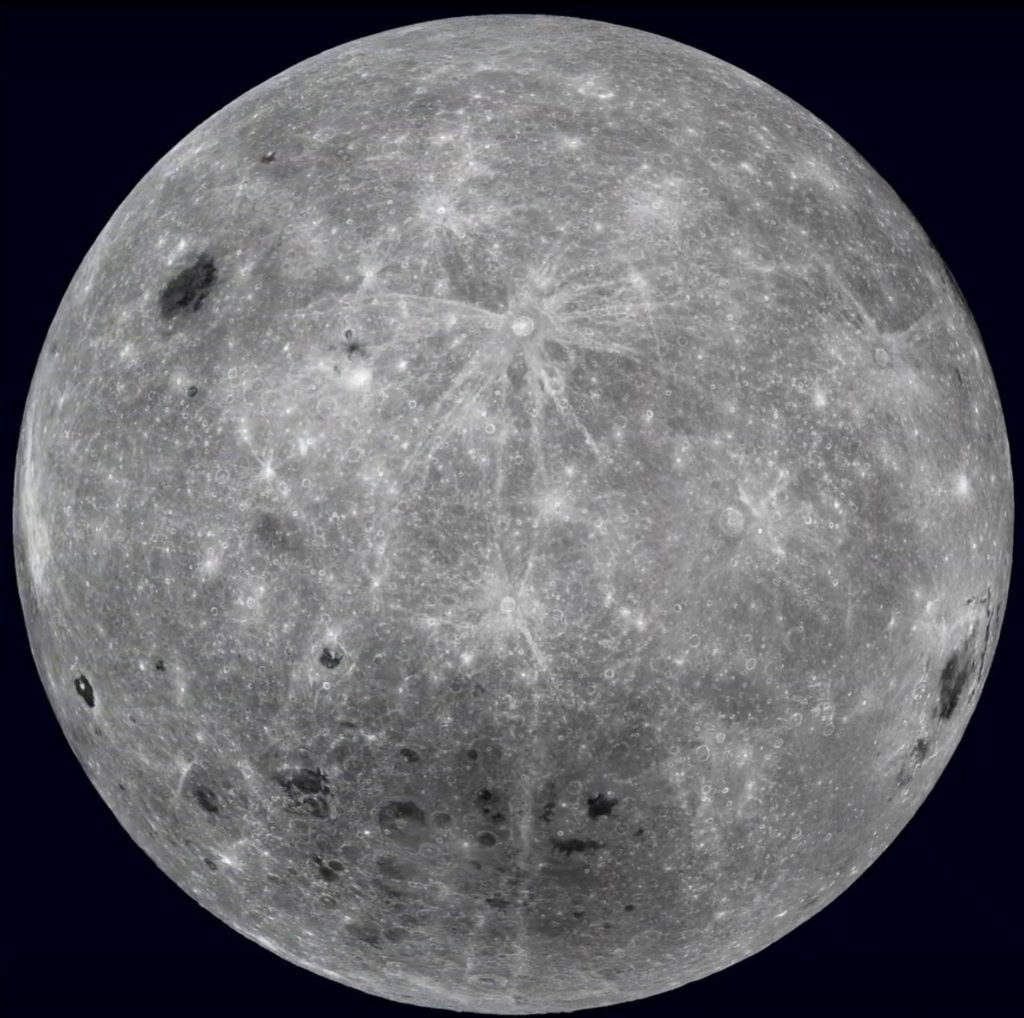
Beyond the Fast
Funnily, while developing this moon fast, I caught up with Kalle Lasn of Adbusters, who has been encouraging people to do something wild on full moon days, or what he calls “Moonday.” This felt very aligned with my own fast and with my effort to cultivate #DoNothingForTheClimateDay, so I agreed to write an essay on Moonday for Adbusters (in the Fake Planet issue). Naturally, this got me thinking further about how else we could ritualize full moon days beyond fasting—after all, they are special, and come only twelve times a year.
Having also been introduced to the Green Sabbath Project recently, turning full moon days into Sabbaths could be a great additional step. It’s hard to imagine a weekly Sabbath in these busy times, but a monthly one might be realistic—where you can take the day off from screens, focus on meditation or get out in nature, write letters to missed friends, read a good book, take a political action, plant something, or do something healing for either you or the Earth (or ideally both). This could be the natural evolution away from an annual #DoNothingForTheClimateDay to a monthly Sabbath. But that’s a topic for another reflection!
Endnotes
*Humans have their own monthly cycles and I imagine it didn’t take long before some ancient wise persons made the connection that we, too, are shaped by the Earth, the seasons, and moon cycles.
**The only difference is which side of the moon is lighted during waxing and waning cycles.
***And if you lose track of the moon cycle, you can tell if it’s a waxing or waning moon by which side of the moon is lit up.
****The next steps could be extending the fast to include the full day. Or adding in the First and Last Quarters, bringing fasting to once a week. The former sounds possible, at least on days where I’m not very hungry by the end of the fast; the latter currently doesn’t—feeling like a shift from a healthtful reset to a significant commitment.
This article appeared first at Gaianism.org and is republished with permission
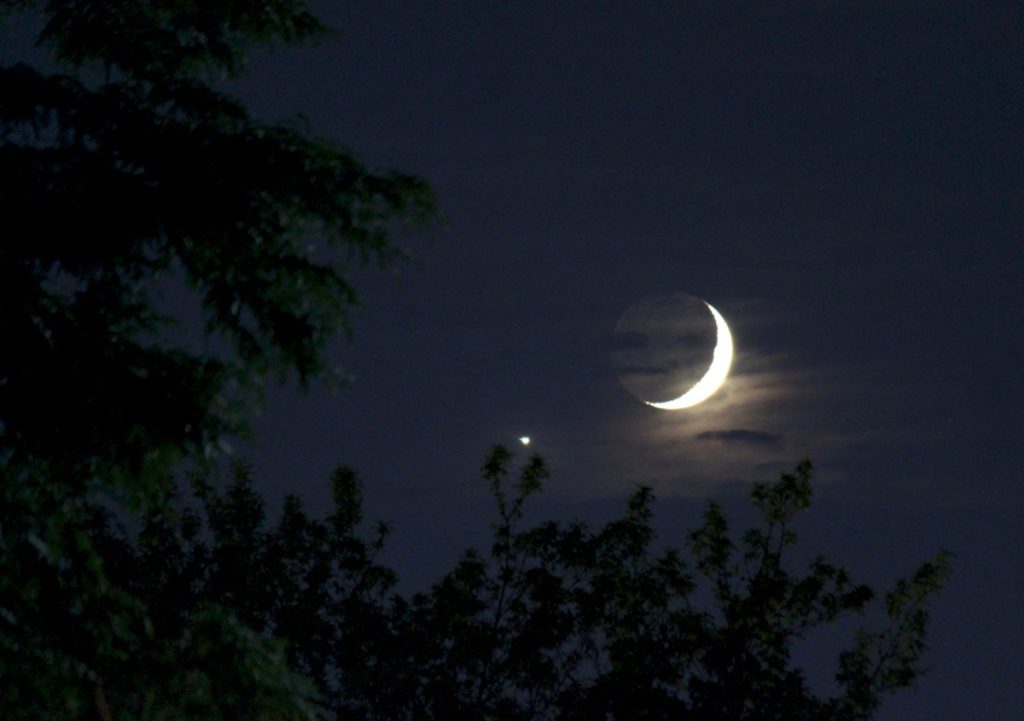
DoNothingForTheClimateDay Erik Assadourian Green Sabbath Project
Thank you Erik and Esperanza Project. I loved this article!